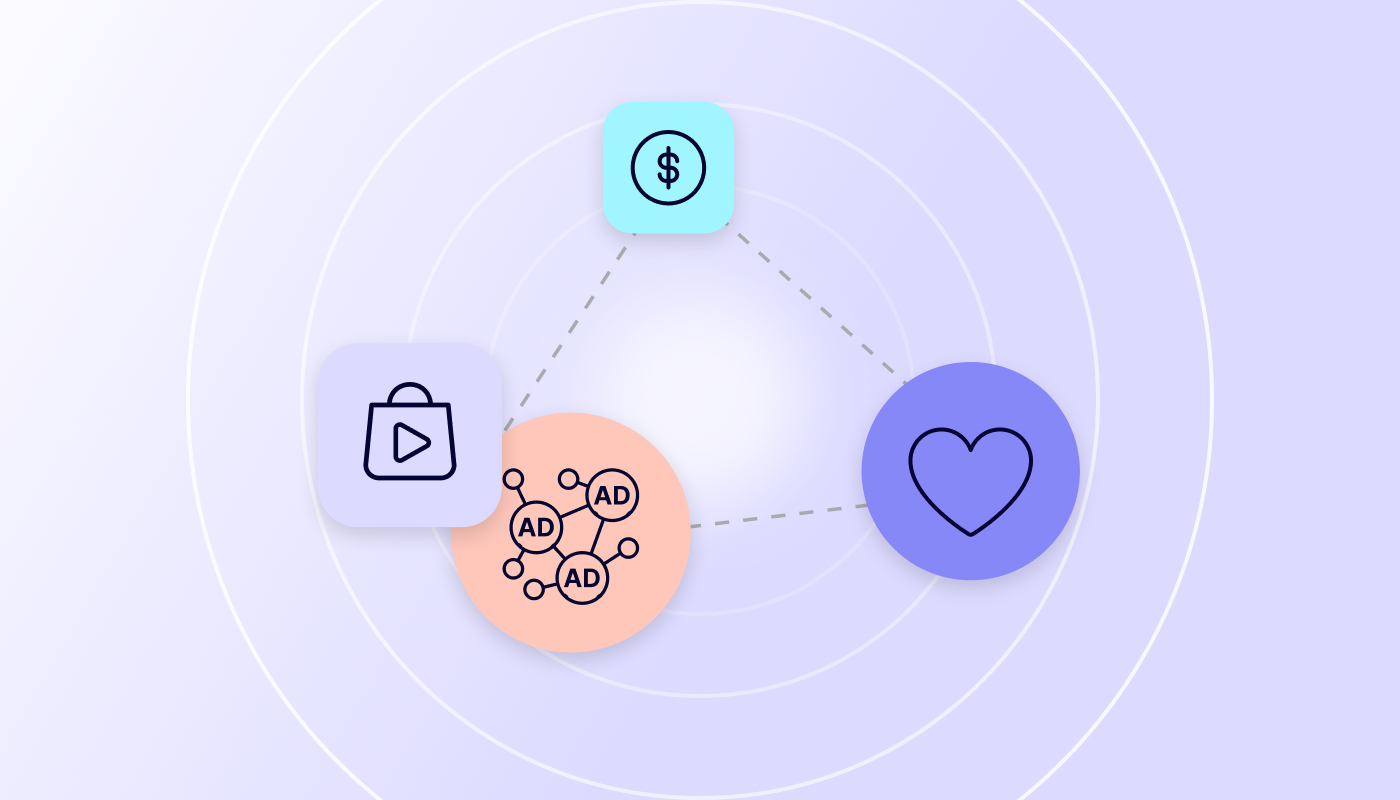Ad tech has a reputation for jargon, but (for once) we didn’t make up these two: probabilistic and deterministic data. Both kinds of data have applications in many industries, academia, and other institutions. Don’t worry – we’re just talking about advertising today.
In today’s blog post, we’ll define the differences between deterministic vs. probabilistic data, what it means for audiences, and how it impacts campaign planning for programmatic traders. Editor’s note: This blog was updated in July 2025 to include the latest available industry data.
Trending: Probabilistic and deterministic
Using probabilistic and deterministic data to target audiences is nothing new. But, with third-party cookies becoming endangered, marketers need to make choices about alternative identifiers and identity solutions. By the end of 2024, there were 100+ identity solutions available, according to Prohaska Consulting’s most recent Identity Partner List. What does this mean for advertisers?
Recent research from AdExchanger and Verve’s 2024 Addressability & Performance study reveals the current state of the industry:
-
- 73% of brands and agencies are still using third-party cookies, with 65% of publishers and media companies following suit—though we expect a rapid shift away
- 93% of brands and agencies and 98% of publishers expect to use contextual targeting by late 2025, making it the most widely adopted cookieless solution
- 88% of brands and agencies and 93% of publishers plan to implement seller-defined audiences as a key alternative to traditional cookie-based targeting
Programmatic traders increasingly need to participate in identity-related conversations. Understanding the nuances of probabilistic and deterministic audiences is key to these discussions. Industry data shows that 44% of publishers have seen a decreased ability to monetize unaddressable audiences. This makes the words probabilistic and deterministic even more prevalent in team meetings and client conversations. Read on to stay in the know on this essential vocab.
Deterministic audiences
Definition: Deterministic audiences are groups created by data supplied directly from users. Deterministic data is also known as validated or qualified data.
What it really means: These data points are usually accurate at the time of collection because they’re personally identifiable. Deterministic audiences are created from a snapshot of data, so accuracy may fade over time.
Examples of deterministic data:
-
- Name and address
- Phone number
Deterministic data may include gender, location, age, and other personal details. For example, users tracking exercise in a fitness app might give the app publisher deterministic data like how often they run, bike, or do yoga. Depending on the user’s data privacy preferences and app permissions, the app publisher could use this information to create a data-confirmed cohort. The app could also use email addresses for a deterministic ID match.
Is deterministic data the same as first-party data? It depends. Deterministic data like an email address supplied by a user falls under the umbrella of first-party data. Some data that isn’t user-supplied, such as transaction history, is still first-party (even though it’s not technically deterministic).
Implications for campaign planning:
Deterministic audiences make targeting (and retargeting) more accurate and effective and can be a more efficient ad spend. However, with limited first-party data, deterministic audiences aren’t as scalable. This challenge is particularly relevant as 73% of publishers and media companies are now primarily relying on first-party data to maintain and grow monetization levels.
Probabilistic audiences
Definition: Probabilistic audiences are groups with a high probability of being accurately profiled. These audiences rely on models built on a subset of deterministic data to identify a larger target audience. They may be categorized at the individual or cohort level.
What it really means: These audiences are based on probabilities — but can also be validated against deterministic data. Probabilistic audiences may be an alternative to purely deterministic ones, but they can’t exist without deterministic data.
Examples of probabilistic data:
- Non-unique device characteristics
- IP address
- Browser or device type
- Timestamps
Some probabilistic solutions also recreate identity using implicit signals such as IP address or a device user agent. While probabilistic audiences don’t have the surefire accuracy of audiences built with deterministic data, they are far more scalable.
Let’s say a user is streaming video content on an Xbox. We don’t have a personal identifier and have no way of knowing who owns the console. Still, we can use these data points to categorize the user into a probabilistic audience and match them to relevant advertising content. In this example, we can infer that the user is probably a gamer. The fact that they’re streaming at 2 a.m. means there’s a good chance they’ll fit in our college-aged audience interested in late-night food delivery services.
Implications for campaign planning:
Audiences built with probabilistic data are at the heart of contextual targeting — a solution that 93% of brands and agencies expect to use by late 2025. Modern probabilistic solutions like ATOM (mobile cohorts) use proprietary machine learning to evaluate and identify cohorts that meet targeting criteria without relying on personal identifiable information. These privacy-centric approaches achieve 100% addressability by building audience cohorts on-device, ensuring user data never leaves the device.
The scalability of probabilistic audiences makes them ideal for awareness campaigns. Advanced solutions like Dataseat’s mobile user acquisition platform have proven applications for performance-oriented campaigns as well, using contextual signals to drive app installs and user acquisition across iOS and Android.
According to the 2024 Addressability & Performance study with AdExchanger, 81% of brands and agencies expect to use cohort-based targeting by late 2025. This highlights the growing importance of probabilistic audience solutions.
Pros and cons of deterministic vs. probabilistic data
Which type of audiences should marketers use? Realistically, you’ll use both. With 81% of brands and agencies planning to use Privacy Sandbox solutions and 77% expecting to implement industry or universal IDs by late 2025, the future clearly involves a hybrid approach. Here are some of the benefits and drawbacks of probabilistic vs. deterministic audiences:
| Deterministic audiences | Probabilistic audiences | |
|---|---|---|
| Pros | High accuracy = improved targeting | Predictive target can mean reaching audiences earlier in the buyer journey |
| Cons | Risk of using outdated data, privacy concerns | Only as good as the deterministic data used to build the model |
TL;DR: Talking points about identity in ad tech
-
- The cookieless transition is accelerating: while 73% of brands and agencies still use third-party cookies, rapid adoption of alternatives is underway.
- Contextual advertising leads the charge: 93% of brands and agencies expect to use contextual targeting by late 2025, making it the most widely adopted cookieless solution.
- First-party data becomes critical: 73% of publishers rely primarily on first-party data to maintain monetization levels as 44% report decreased ability to monetize unaddressable audiences.
- Automation lags behind: Only one-third of brands and agencies have mostly or fully automated privacy, identity, and first-party data management processes. Identity through informed consent will be essential to test and validate solutions.
- Connected TV emerges as growth driver: 50% of brands and agencies report CTV as their largest area of advertising spend growth.
More to the identity story
Terms like probabilistic and deterministic are the tip of the iceberg when understanding the identity landscape. Verve is committed to providing clear, helpful content to support our friends and colleagues across ad tech, even if you’re not our customer. We have in-depth reports and plenty of blog and social content to help demystify identity for marketers, consumers, and the supply side of advertising. Follow along on LinkedIn, or subscribe to our newsletter below!







